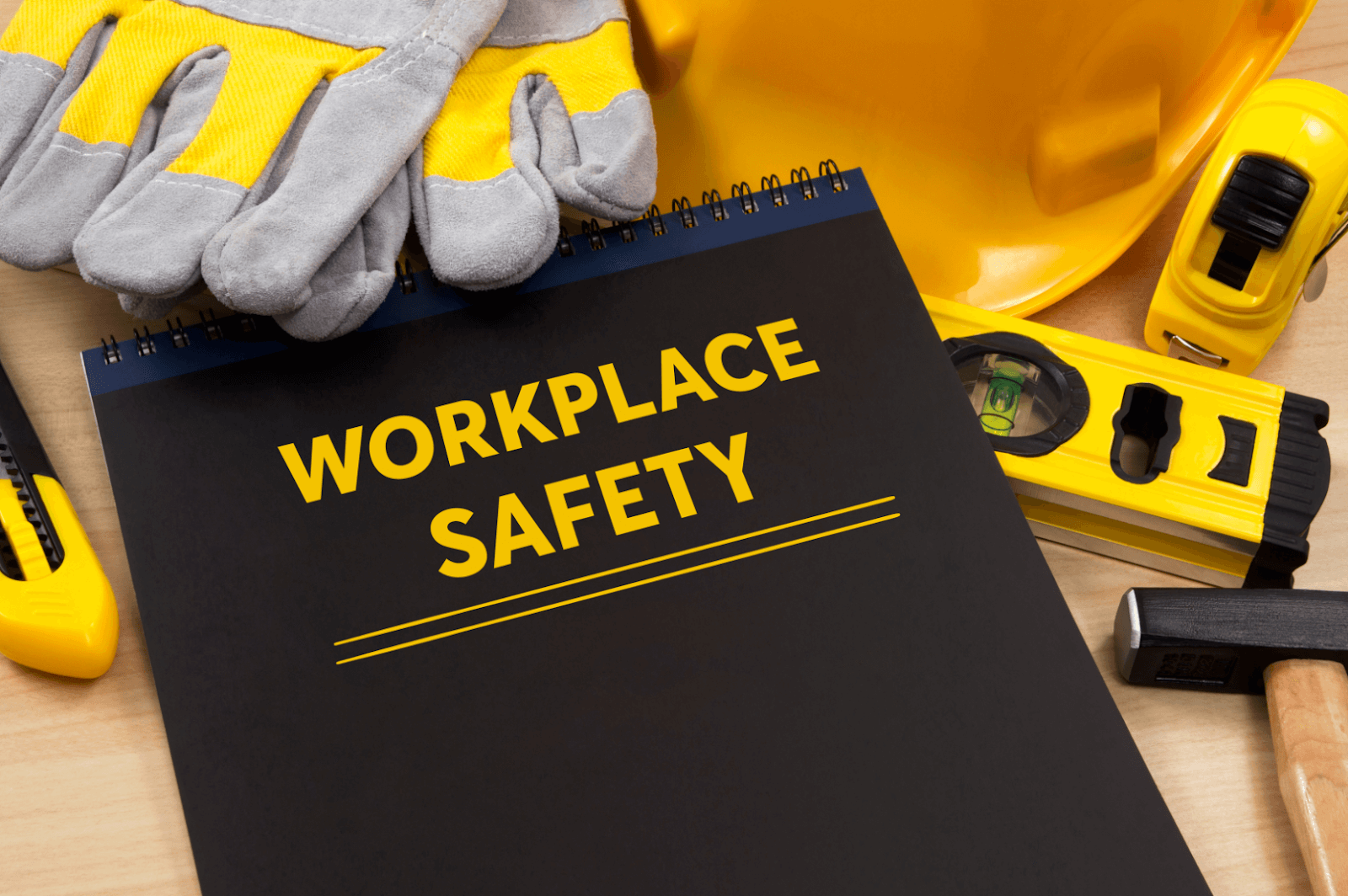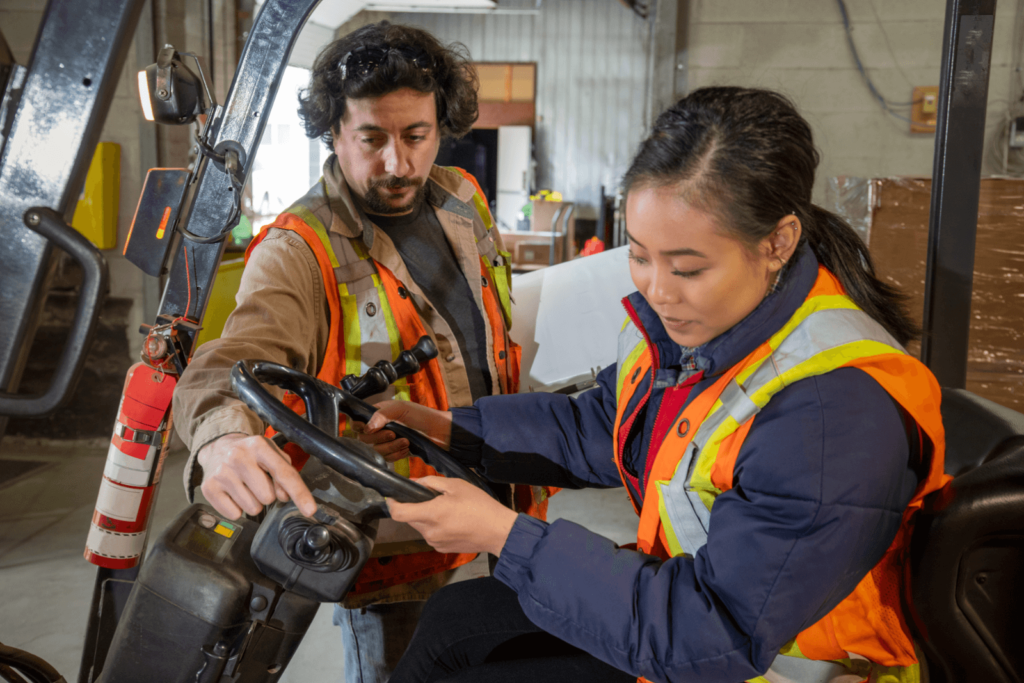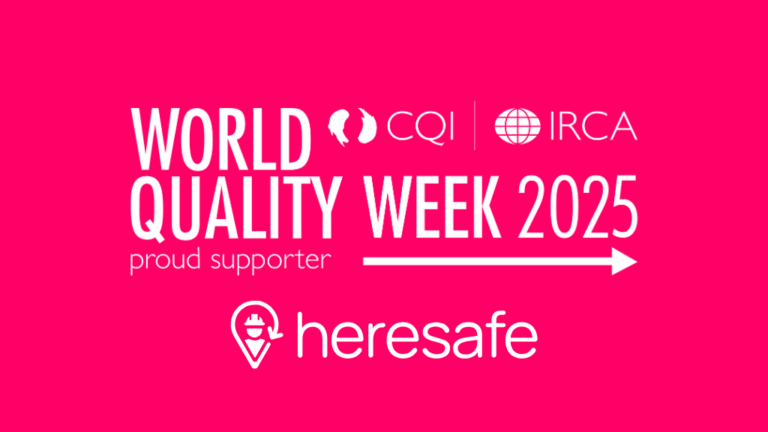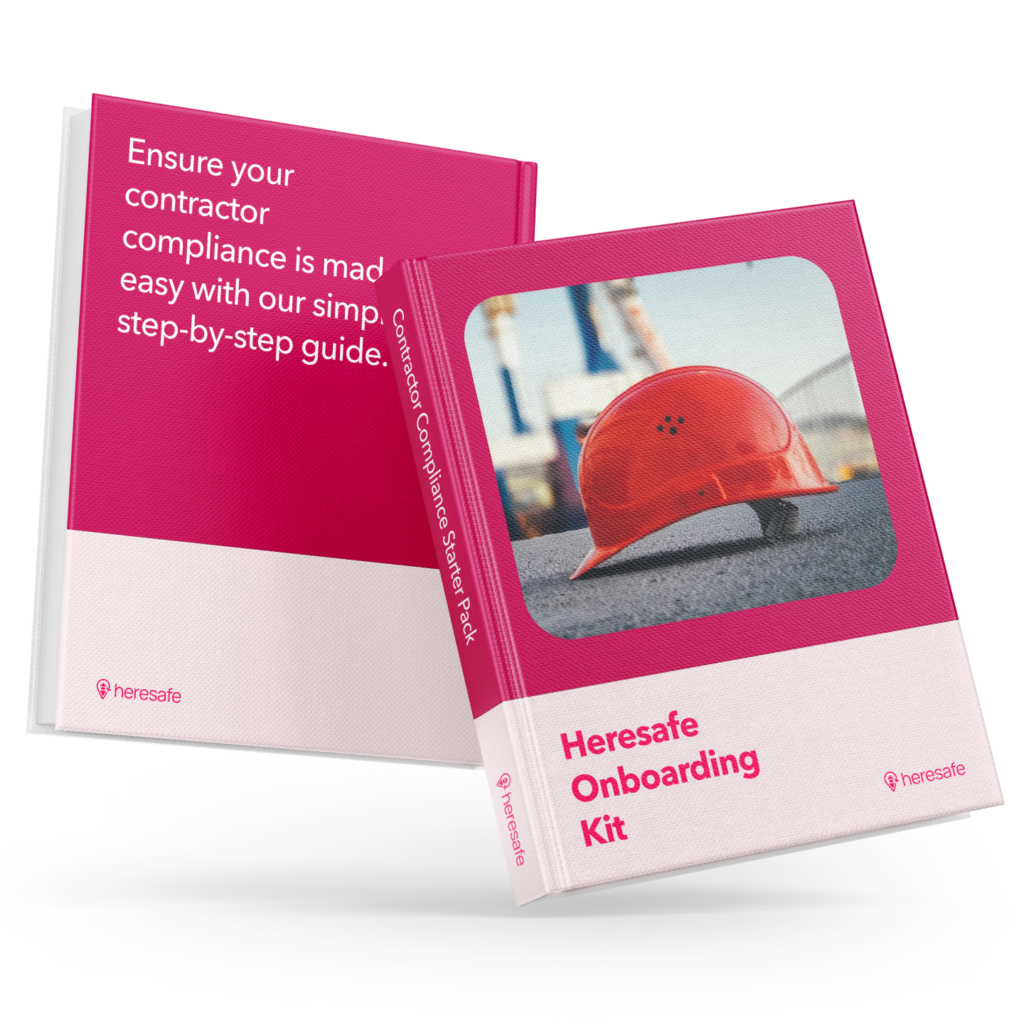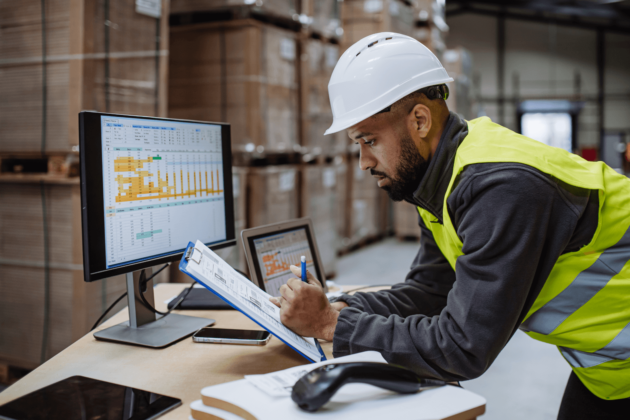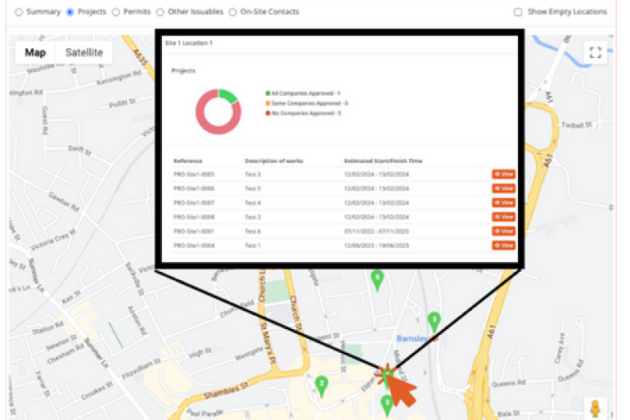- Why Heresafe?
- PricingWe don’t hide behind fancy sales teams before we tell you, our prices.
- Clients
See who we are working with and what they have to say about Heresafe.- Resources
Check out our blog, useful guides, whitepapers and product videos.- Prequalification and Induction Guide
- Contractor Compliance Guide
- Mini-Audit your Permit to Work System
- Health and Safety Audit Checklist
- Resource Library
- Blog
Book a demo
The 5-Step Risk Assessment: A Comprehensive Guide for Workplace Safety
Did you know that nearly 60% of workplace injuries could be prevented with proper risk assessments? In 2025, evolving risks and technology make a robust risk assessment process more critical than ever.
Risk assessments are the foundation of a safe and compliant workplace. As we move further into 2025, the landscape of workplace risk is changing rapidly. New technologies, hybrid working arrangements, and ever-evolving regulations mean that hazards are not always as obvious as they once were. From construction sites to corporate offices, every environment faces unique challenges that require a proactive approach to health and safety. Health and Safety at Work etc. Act 1974
At Heresafe, we understand that safeguarding your people and operations isn’t just about ticking boxes-it’s about creating a culture where everyone arrives safe, works safe, and stays safe. That’s why a thorough, up-to-date risk assessment process is more important than ever. Leveraging digital tools, real-time data, and streamlined workflows, organisations can now identify hazards faster, prioritise risks more effectively, and ensure ongoing compliance across every site.
In this guide, we’ll walk you through the essential 5-step risk assessment process tailored for the modern workplace. Whether you’re managing a single site or coordinating contractors across multiple locations, these steps will help you protect your workforce, meet your legal obligations, and foster a safer, more productive environment.
What you’ll learn in this guide:
- How to identify hazards effectively in today’s workplaces
- Who might be harmed, and why it matters to consider everyone on site
- How to evaluate and prioritise risks using digital tools and real-time information
- Best practices for implementing and tracking control measures
- The importance of recording findings and scheduling regular reviews
Ready to future-proof your risk management? Let’s get started with step one…
Step 1: Identify Workplace Hazards
Hazards are anything with the potential to cause harm. In 2025, these can be physical, chemical, biological, ergonomic, psychosocial, technological, or even related to natural disasters. Recognising the full spectrum of hazards is the crucial first step in any risk assessment.
Common examples include:
- Machinery and moving parts
- Hazardous substances such as chemicals or fumes
- Ergonomic risks from poorly designed workstations or remote working setups
- Psychosocial hazards like workplace stress, bullying, or mental health challenges
- Technological risks, including cyber threats or equipment malfunctions
- Natural hazards such as flooding or extreme weather events
To identify hazards effectively, many organisations now use AI-powered inspections and digital checklists, which can detect risks faster and more accurately than manual methods. Additionally, engaging employees through feedback and reviewing past incident reports helps uncover hidden or emerging hazards that might otherwise be overlooked.
“Identifying hazards early is the first line of defence in workplace safety.”
Step 2: Identify Who Might Be Harmed and How
Once hazards are identified, it’s essential to consider everyone who might be affected. This includes not only employees but also contractors, visitors, maintenance workers, and even members of the public near your workplace.
Different roles face different risks. For example:
- Construction workers may be exposed to falls or heavy machinery
- Healthcare staff face biological hazards and infection risks
- Office workers might experience ergonomic or psychosocial hazards
A comprehensive risk assessment takes these varied exposures into account, ensuring that control measures protect all individuals who could be harmed.
Step 3: Evaluate and Prioritise Risks
Evaluating risks involves assessing both the likelihood of an incident occurring and the potential severity of its consequences. This is often done using a risk matrix, which helps categorise hazards as low, medium, or high risk.
In 2025, many organisations enhance this process with real-time data from digital monitoring systems and dynamic risk assessments. These tools allow safety teams to adjust priorities quickly as workplace conditions change.
High-risk hazards should be prioritised for immediate action to prevent incidents. Using digital dashboards, managers can track risk levels across multiple sites and ensure resources are focused where they are needed most.
Step 4: Implement Control Measures
Once risks have been evaluated and prioritised, the next step is to implement control measures that effectively reduce or eliminate those risks. The internationally recognised Hierarchy of Control provides a structured approach to selecting the most effective safety measures, ranked from most to least effective:
- Elimination
Completely remove the hazard from the workplace. For example, automating a dangerous manual task to remove worker exposure entirely. This is the most effective control but is not always feasible. - Substitution
Replace the hazard with a safer alternative. For instance, using water-based paints instead of solvent-based ones to reduce harmful fumes. - Engineering Controls
Isolate people from the hazard through physical changes, such as installing machine guards or redesigning workstations to improve ergonomics. - Administrative Controls
Change work practices or policies to reduce risk, including staff training, scheduling to limit exposure, and clear safety procedures. - Personal Protective Equipment (PPE)
Use protective gear such as helmets, gloves, masks, and harnesses as a last line of defence when other controls cannot fully eliminate risks.
Applying the hierarchy ensures that organisations prioritise the most effective controls first, reducing reliance on PPE and administrative measures alone.
In 2025, digital tools like Heresafe enable organisations to track the implementation of control measures, ensuring compliance and accountability. Automated reminders, progress dashboards, and audit trails help safety teams monitor controls in real time, making it easier to maintain a safe workplace across multiple sites.
Step 5: Record Findings and Review Regularly
Documenting your risk assessment findings is essential for legal compliance and continuous improvement. Detailed records should include identified hazards, risk evaluations, control measures applied, and any residual risks.
Regular reviews are crucial to ensure controls remain effective, especially:
- After an incident or near miss
- When introducing new equipment, substances, or processes
- Following changes in legislation or industry standards
Using digital record-keeping and automated reminders helps organisations stay on top of review schedules and maintain up-to-date risk assessments. This ongoing management supports a proactive safety culture and reduces the likelihood of workplace incidents.
To deepen your understanding and support your risk management efforts, consider exploring these resources:
- Internal: Heresafe’s Contractor Management, Safety Technology, and Contractor Onboarding.
- External: Authoritative guidance from the Health and Safety Executive (HSE), the International Labour Organization (ILO), and the Occupational Safety and Health Administration (OSHA).
Conclusion: Protect Your Workplace with a Thorough 5-Step Risk Assessment
A comprehensive risk assessment is the cornerstone of a safe, compliant, and productive workplace. By following the updated 5-step process- identifying hazards, recognising who might be harmed, evaluating and prioritising risks, implementing effective control measures, and maintaining thorough records with regular reviews- you can significantly reduce workplace incidents and protect everyone on site.
In 2025, embracing digital tools and data-driven approaches not only streamlines this process but also ensures ongoing compliance and improved safety outcomes across all your locations.
See Heresafe in Action – Book Your Free Demo Today
Ready to eliminate compliance headaches and transform how you manage contractors and supply chain safety?
Join the 95% of Heresafe clients who say we’ve improved their productivity – and discover why 100% agree that contractor management would be less efficient without us.
With Heresafe, you can:
- Automate compliance and safety across your entire supply chain
- Gain real-time, 360° visibility of all contractor activity and high-risk jobs
- Effortlessly keep documents, credentials, and inductions up to date
- Eliminate costly errors and missing information with digital dashboards
- Empower your team and contractors with a user-friendly, self-service portal
No hidden costs. No pushy sales calls. Just a straightforward conversation about your needs and a hands-on look at how Heresafe can help.
Book your free demo now
You’ll receive instant access to our onboarding kit and a personalised walkthrough from our expert team. See for yourself how easy it is to ensure every contractor arrives safe, works safe, and stays safe across all your sites.
Book a demoFind out if you’re ready with our Heresafe Onboarding Kit
Unsure if Heresafe is the right fit? We understand that choosing a new system can be challenging. That’s why we’ve developed our Onboarding Kit to simplify the decision-making process.
Check our package details
No matter which package you choose, you'll receive the best features tailored for you and your team, to achieve your automation and management goals. Find more details on the available packages.
Make it your own
You’ll get to see and choose your customisation options, and check out the available add-ons and extras so the system is exactly what you want and need.
Getting you started and seeing value
Keeping this guide with you, and working closely with us, we can walk you through onboarding so you can be completely up and running with your own Heresafe system.
It’s easy to get started.
Step 1
Book a demo of Heresafe with the team.
Step 2
We’ll chat through your requirements and see if Heresafe is right for you.
Step 3
We’ll send you demo access and our onboarding kit to help you decide what you need.
Step 4
You decide if we’re right for you. No pushy sales calls.
Step 5
Like what you see and hear? Let’s get you onboarded with Heresafe!
- Clients
